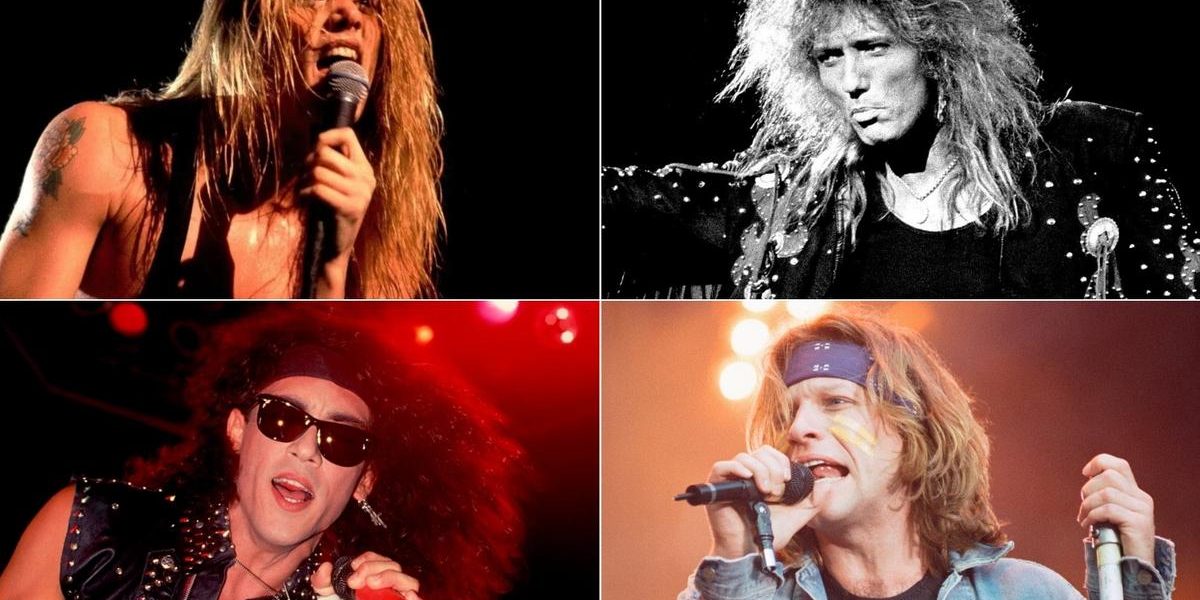Discover our ultimate selections for the heaviest songs crafted by 11 iconic big hair metal bands. This genre, often underestimated for its reliance on catchy pop melodies, surprisingly delivered a powerful musical punch, challenging the misconceptions of its critics.
The label “hair metal” emerged as a derogatory term used to categorize the hard rock bands that dominated the Sunset Strip in the 1980s, many of which were infamous for their hedonistic lifestyles. Critics frequently dismissed this genre as shallow and frivolous, overlooking the profound influence of traditional hard rock and metal roots that many of these artists embraced.
Critics of hair metal also overlooked that, as the grunge movement began to overshadow pop-metal in the early ’90s, several of these ’80s rock icons adeptly updated their sounds for a new era. By exploring heavier compositions and richer textures, they showcased their musical adaptability. While not all of these innovations found commercial success, many yielded exceptional musical results that deserve recognition.
Continue reading to explore our curated list of the heaviest songs from 11 influential big hair metal bands.
Bon Jovi’s “Hey God” from the Album These Days (1995): A Reflection on Humanity’s Struggles
Bon Jovi showcased their ability to evolve with the changing music landscape on their 1995 album These Days, which blends genres like country, adult-contemporary, and powerful hard rock. The album’s opener, “Hey God,” stands out as a formidable hard rock anthem, characterized by its colossal groove and the fiery guitar work of Richie Sambora. In this track, Jon Bon Jovi passionately implores God to help him understand the pain and injustice pervasive in the world, delivering one of his most urgent and compelling vocal performances to date.
Def Leppard’s “No No No” from High ‘n’ Dry (1981): Harnessing Raw Energy and Power
Prior to fully embracing the glam metal trend with albums like Pyromania and Hysteria, Def Leppard carved their niche as hard rockers influenced by the New Wave of British Heavy Metal. Their second album, High ‘n’ Dry, maintained this energy, particularly in its electrifying closing track “No No No.” This song features blistering guitar riffs, an unrelenting punk-inspired drive, and Joe Elliott’s intensely powerful vocals. Even within this metallic framework, the band’s knack for catchy melodies and crossover potential shines brightly amid the heavy instrumentation.
Dokken’s “Tooth and Nail” from the Album Tooth and Nail (1984): A Testament to Perseverance
Dokken faced significant pressure while creating their sophomore album Tooth and Nail, which served as a pivotal moment in their career as they fought to avoid being dropped by Elektra Records. This album marked a shift towards a more polished pop-metal sound, yet it retained remnants of their heavier musical roots. The title track kicks off the album with a furious speed metal vibe, showcasing Don Dokken’s aggressive vocals alongside George Lynch’s intricate guitar solos. Their creative tensions during the recording process only enhance the raw energy and authenticity captured in this powerful track.
READ MORE: The Heaviest Song by 10 Big ’70s Rock Bands
Motley Crue’s “Smoke the Sky” from the Album Motley Crue (1994): Embracing Heavy Metal Transformation
When Motley Crue made the bold decision to replace Vince Neil with John Corabi for their self-titled 1994 album, they fully shed their glam-metal persona and embraced a heavier sound. The track “Smoke the Sky” symbolizes this transformation, featuring gritty down-tuned riffs, thunderous drumming, and Corabi’s raspy, commanding vocals. The song’s breakdown at 2:12 stands out as the heaviest moment in the band’s discography, delivering an intense performance that showcases the raw power and ferocity of any band from the Sunset Strip.
Get ready to light it up!
Poison’s “Look What the Cat Dragged In” from Look What the Cat Dragged In (1986): A Vivid Snapshot of Rock ‘n’ Roll Excess
While Poison was never intended to be mistaken for a heavy metal band like Slayer, the title track from their debut album vividly illustrates the life of hard-partying rockers living life on the edge. C.C. DeVille’s sharp guitar riffs, paired with Bret Michaels’ carefree and rebellious vocals, elevate “Look What the Cat Dragged In” beyond the lighthearted hedonism evident in much of the rest of the album, venturing into genuinely intense territory. Michaels passionately sings, “Half alive or half dead, I just can’t tell!” which adds an authentic depth to the song’s narrative.
Quiet Riot’s “Bang Your Head (Metal Health)” from Metal Health (1983): A Rallying Cry for Rock Enthusiasts
Quiet Riot achieved a momentous milestone with their album Metal Health, becoming the first metal album to top the Billboard 200 chart, largely propelled by their hit cover of Slade’s “Cum On Feel the Noize.” However, it was the title track that solidified the band’s rock ethos and message. “Bang Your Head (Metal Health)” serves as a fervent call to embrace the electrifying power of rock ‘n’ roll, propelled by Kevin DuBrow’s commanding vocals, anthemic hooks, and a scorching guitar solo. The lyric “Metal health will drive you mad” succinctly captures the essence of metal, encapsulating the spirit of the genre.
Ratt’s “Sweet Cheater” from the EP Ratt (1983): Raw Energy and Glam-Thrash Fusion
Similar to their glammed-out counterparts Motley Crue, Ratt launched their career as a spirited punk-metal ensemble, releasing their self-titled debut EP in 1983. This raw, independently produced collection features some of their heaviest tracks, including the relentless glam-thrash anthem “Sweet Cheater.” With its double-bass drumming, metallic riffs, and piercing screams, this Robbin Crosby composition expertly bridges the band’s origins in the Metal Massacre compilation with their eventual mainstream breakthrough album, Out of the Cellar.
Skid Row’s “Slave to the Grind” from the Album Slave to the Grind (1991): A Bold Shift in Musical Direction
After achieving monumental success with their self-titled debut, Skid Row made a daring departure from pop-metal with their explosive sophomore album, Slave to the Grind. The title track is an unyielding anthem that encapsulates the band’s anti-authoritarian stance, featuring aggressive thrash riffs, high-speed tempos, and Sebastian Bach’s soaring, melodic vocals. The version of “Slave to the Grind” featured on the album is actually the original pre-production demo, as the band found it challenging to replicate its raw intensity in subsequent recordings. This decision proved wise, as the track erupts with authentic, unrestrained energy.
Warrant’s “Inside Out” from the Album Dog Eat Dog (1992): A Hidden Gem of Musical Might
It’s a tragic irony that at the moment Warrant produced their most powerful work, Dog Eat Dog, the music-buying public had largely turned their backs on anything associated with hair metal. Consequently, Dog Eat Dog went largely unnoticed, selling only a fraction of what their previous albums achieved. However, those who dared to explore this album were rewarded with a torrent of muscular riffs and soaring melodies. The penultimate track “Inside Out” elevates the intensity to unprecedented levels with relentless double-bass drumming, Jani Lane’s ferocious vocals, and an explosive guitar solo. When Lane screams, “Get this mic outta my fuckin’ face!” at the song’s conclusion, it may seem like an exaggeration, but the preceding performance is so visceral that it resonates as genuine.
Whitesnake’s “Bad Boys” from the Album Whitesnake (1987): A Hard-Rocking Anthem of Rebellion
Whitesnake’s self-titled 1987 album catapulted the band, led by David Coverdale, into superstardom, largely thanks to chart-topping ballads like “Here I Go Again” and “Is This Love.” However, the album’s deeper cuts offer a stark contrast to these love-centric hits. “Bad Boys” emerges as the hardest-hitting track, serving as an outlaw anthem bolstered by Coverdale’s gritty vocals and John Sykes’ lightning-fast, tremolo-picked guitar riffs. Sykes’ frenetic solo ventures into power metal territory, marking a decisive departure from the band’s blues-rock origins.
Winger’s “Junkyard Dog (Tears on Stone)” from the Album Pull (1993): A Progressive Heavy Metal Journey
Winger faced an uphill battle to shed the burden of being a punchline in the hair metal conversation, particularly following an ill-timed Beavis and Butt-Head sketch that coincided with the release of their heaviest and most cohesive album to date. Although many rock enthusiasts hesitated to admit it at the time, Pull diverged significantly from Winger’s earlier glam-influenced works and sentimental AOR ballads. “Junkyard Dog (Tears on Stone)” forged a new path with its powerful, downtuned riffs and commanding groove. Kip Winger’s bluesy, agile vocals lend a melodic touch, while a haunting acoustic interlude transforms this nearly seven-minute track into a heavy yet progressive epic.
Explore the 10 Best Hair Metal Albums from Non-Hair Metal Bands
Some bands may not fit the traditional hair metal mold, yet they convincingly embraced the style for at least one album.
Gallery Credit: Sydney Taylor
Celebrating Hair Metal Bands That Deserve Induction into the Rock and Roll Hall of Fame
This often-maligned subgenre deserves greater recognition, and these hair metal bands should be honored with induction into the Rock and Roll Hall of Fame.
Gallery Credit: Bryan Rolli






